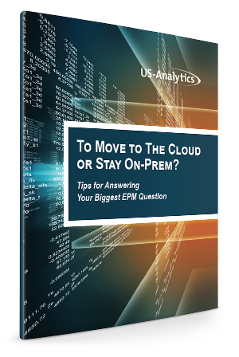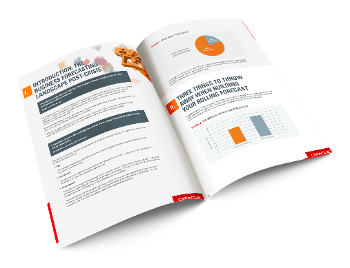As the CFO, you face challenges every year. Some problems roll over from the year before, and others are new, such as changes to regulations or tax reforms.
As the leader of your finance and accounting departments, you need to not only overcome these challenges, but allow those challenges to make your processes even better. In 2018, you have the opportunity to implement changes that will make your entire organization more successful.
In this blog post, we’ll cover some challenges you’ll most likely face this year and how you can conquer them.
Allocating Resources for Technology
If your accounting and FP&A departments are still using manual methods, then you probably already know that it causes slowdowns in your processes and creates data inconsistency. Obviously, things need to change.
There are a variety of tools out there, ranging from a comprehensive, unified CPM platform like OneStream XF to the on-prem Hyperion suite of tools. There’s also the Oracle EPM Cloud and an OneStream cloud deployment option.
As the CFO, you’re naturally worried about the cost and total cost of ownership of these solutions. The decision you must make really comes down to the cost of the cloud version versus the cost of the on-prem version. When looking at TOC estimations, there’s a simple equation you can use…

However, this equation isn’t perfect. You’ll still need to maintain your solution even if it’s in the cloud — you just don’t have to worry about things like patch updates and new versions. This blog post gives an overview of the support tasks that still need to be completed when your solution is in the cloud.
Still have questions about differences between cloud and on-prem solutions? Get the eBook….
Finding Alternatives to Traditional Budgeting
If you’ve already adopted an automated solution mentioned above or if you’re planning to do so, then you really need to ditch your traditional budgeting process. But, why? First of all, whichever EPM technology you choose will be sophisticated and have capabilities that you should take advantage of. Secondly, the annual budgeting process is long and ties up resources — in today’s modern business world, things have already changed once your annual budget is complete.
So, what other methods should you be looking at?
Rolling Forecasts
Rolling forecasts allow your budget to become a living document. You’re constantly making changes to fit with various external and internal trends. With an EPM solution, these trends are easier to identify and adapt your budget to.
In this blog post, we cover how rolling forecasts can make your organization more accurate, agile, and driver-based. You’ll also learn about the challenges you might face while adopting this process, such as Wall Street’s emphasis on quarterly earnings.
If you’d like to learn even more about rolling forecasts, download the guide…
Scenario Planning
I don’t have to tell you, CFO — there’s no crystal ball to see into the future. But scenario planning is about as close as it gets. Scenario planning allows you to create a variety of scenarios to investigate future conditions. You can even perform an analysis that allows you to identify key business drivers. Ultimately, it comes down to planning for almost any scenario, so you can set realistic goals and create the most strategic plan.
Read this blog post to see how you can get started with scenario planning and learn about technologies that emphasize this function.
Tax Reform
Since federal enactment of ASC 740 went into effect on December 22, 2017, you’re probably well aware of this one. Fortunately, your accounting team has a measurement period to work on these reporting changes well into 2018, according to the CFO Journal.
states the significant impacts of this new legislation, including…
- Deferred tax assets and deferred tax liabilities
- Blended tax rate
- Foreign subsidiary liability
- Tax credits
- Transition tax
The Oracle EPM Cloud includes the Tax Reporting Cloud Service (TRCS), which can help your team with these changes as well as improve transparency between tax and finance. Features of TRCS include…
- Tax Provisioning with automation, data collection, calculation, and integration with tax compliance software
- Country-by-Country reporting template with data automation, data collection, dashboards and analysis, and master file collaboration
- Workflow and Task Management with a tax calendar, global collaboration, Microsoft Office Integration, and security
- Tax Schedule and Dashboards that eliminate spreadsheets, allow for tax KPIs, and show you tax process improvement








